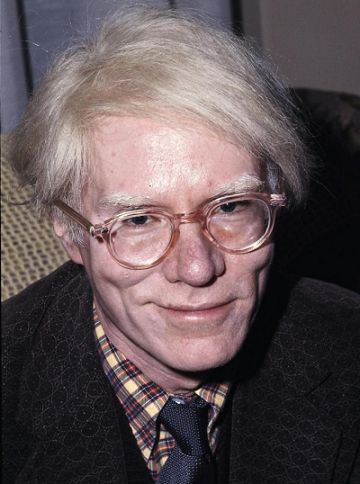ANDY WARHOL
EXCEPTIONAL EXHIBITION IN NEW YORK UNTIL MARCH 31 |
|
|
Until March 31, 2019, the Whitney Museum of Art in New York pays tribute to American artist Andy Warhol. Discover his most beautiful masterpieces! "Warhol is an artist of our time especially in full-blown selfie, in which everyone is the star of his own photo or his own film," acknowledged Adam Weinberg, director of the Whitney Museum of Art's New York institution. The Pope of Pop-Art, who died in 1987, is the author of these iconic paintings diverting photos of boxes of soups or portraits of Marylin Monroe. On the occasion of the 90th anniversary of its birth, the Whitney Museum of Art in New York offers a complete retrospective of the work of Andy Warhol. To be seen until March 31, 2019. The exhibition is titled "Andy Warhol, From A to B and Back Again" (Andy Wahrol A to B and so on) in tribute to a book title written by Andy Wahrol on his "philosophy". Under the curation of curator Donna De Salvo, who worked with the artist during the last months of her life, the Whitney Museum, which specializes in modern and contemporary American art in New York, has launched. More than 350 works of art have been collected This retrospective organized in chronological order is in any case exceptional because never so many paintings of Andy Warhol have been collected in one place! In total, you can discover 350 works from the largest museums in the world but also from private collections. The organizers insist on the fact that several works are presented together for the first time. In addition to the paintings, the exhibition also invites you to discover films and videos shot by Andy Wahrol. The Pop-Art spirit will surprise you again! The exhibition, which is spread over three levels of the museum, embraces the entire career of Warhol, since its beginnings as an advertising illustrator to his journey in abstraction.
A significant part of the installation, which includes over 300 works, is dedicated to video, which the silver-haired dandy used for documentaries, experimental films, cultural programs and commercials. In addition to this multi-media dimension, the exhibition evokes a Warhol in perpetual motion, eager for experiences, moved by the inspiration of others as well as his own, whose imprint endures. "Warhol's themes - mass media, celebrity culture, show business and politics - shape our lives perhaps more today than in life," says Adam Weinberg. Behind the aesthetic dimension lies an eminently political artist. At the center of everything, the image and the power of representation, a reflection structured by its advertising experience, during the 1950s. From Campbell's soups to Coca-Cola, from Marilyn Monroe to Mao Tse-tung, Andrew Warhola - from his real name - plays with the icons of his time, while tirelessly documenting his own life and work, to the point of becoming, himself, a mark. The exhibition reflects his taste for serigraphy, bright colors and these famous repetitive images, it also shows that Warhol has never been locked into this form of expression, even if it owes its success. In 1978, at age 50, he began the Shadows abstract series, purposely stripped of pop imagery. In the early 1960s, Andy Warhol, recognized advertising, uses a direct technique in his advertising drawings: drawing his creations on waterproof paper, he passes the contours of ink still wet on sheets of absorbent paper, on the principle of the blotter . At that time, many painters are also advertising illustrators, but do so discreetly. Warhol, on the other hand, is so well known as an advertising artist that the rest of his artistic work is not taken seriously. It was in the 1960s that Warhol began making iconic paintings of American products such as the Campbell Soup Company's Campbell's Soup Cans and Coca-Cola bottles, as well as celebrity paintings such as Marilyn Monroe, Troy Donahue , and Elizabeth Taylor. He founded "The Factory", his studio, over the years and has gathered around him a wide range of artists, writers, musicians and "underground" celebrities. Through silkscreening he produced by seeking not only to make "mass-produced" products artistic, but by popularizing the mass production of art itself. By minimizing his role in producing his work and declaring that he wanted to be a "machine", Warhol unleashed a revolution in art. He has the idea to elevate the images of popular culture to the rank of elitist art, joining the artists of pop art, movement launched in London in the mid-1950s by Richard Hamilton and Eduardo Paolozzi, who experiment independently of each other. If Roy Lichtenstein and Jasper Johns are the pioneers, Andy Warhol will be the "Pope of the Pop" and is considered the master. In 1963, he adopted the technique he would use for his most famous works: screen-printed photography on canvas . The simplified photographs in black and white, without gray, are printed in silkscreen on the canvas painted with large areas of color. The pattern is sometimes reproduced several times on the canvas, like a pattern of wallpaper. This is the stereotype of pop art 10 The favorite motives will be registered trademark names, the dollar symbol, the faces of celebrities. The tone, both popular and iconoclastic, is inspired by popular culture. At Warhol's image, its power within the consumer society is linked to death. The repetition of the figure often refers to its exhaustion. The choice of subjects is related to this obsession with death, including Marilyn Monroe's famous screen-printed canvases (painted after her death, especially the Diptych Marilyn) or Liz Taylor (painted while the actress was seriously ill). infinitely reproducible icons that become images of consumption. In the last years of his work, Warhol applied his style to numerous command portraits, while continuing to experiment with other pictorial techniques in his series Shadows, Oxydation paintings, and his covers of paintings by Botticelli or Leonardo da Vinci. |
|
| Kate White for DayNewsWorld | |
 |
|






